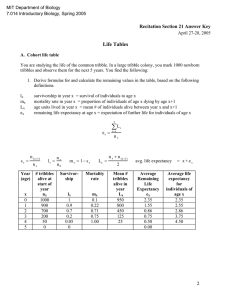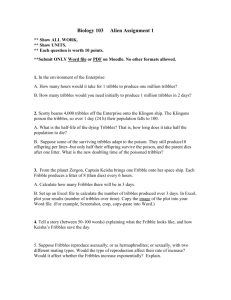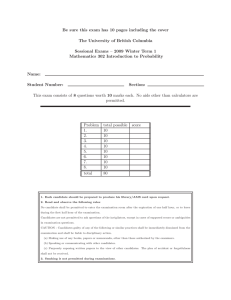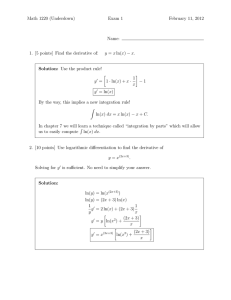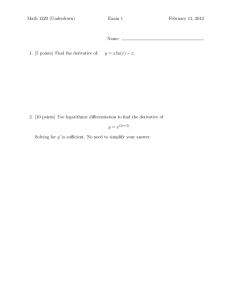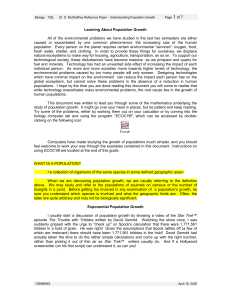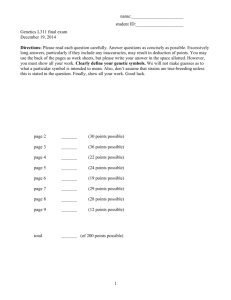Life Tables Recitation Section 21
advertisement
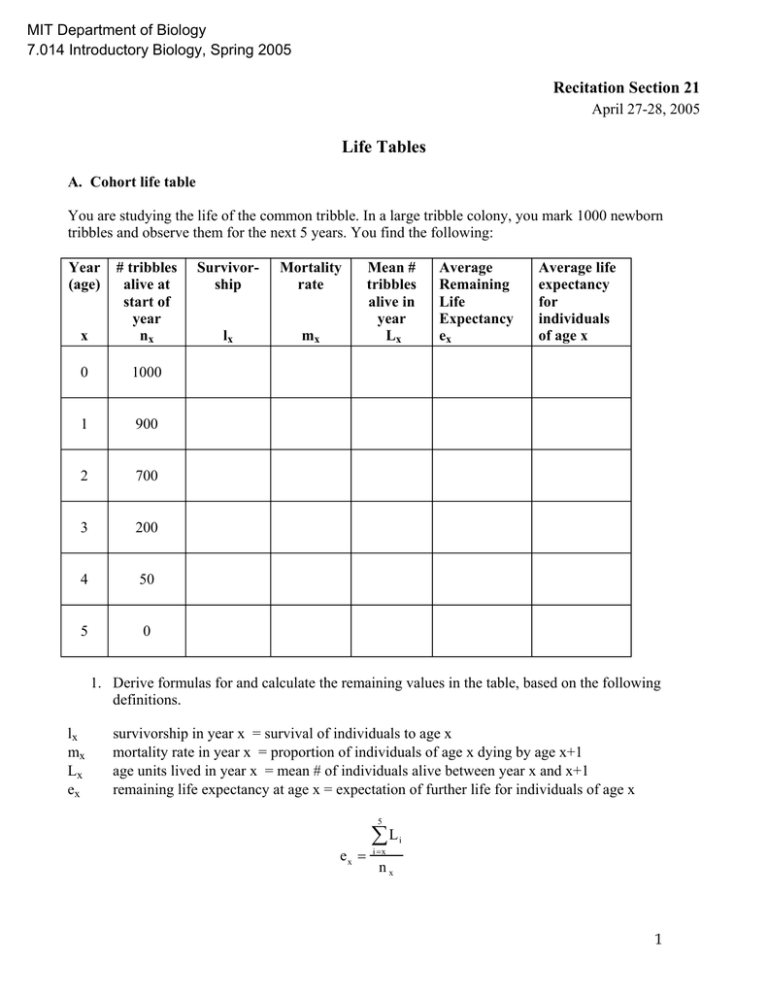
MIT Department of Biology 7.014 Introductory Biology, Spring 2005 Recitation Section 21 April 27-28, 2005 Life Tables A. Cohort life table You are studying the life of the common tribble. In a large tribble colony, you mark 1000 newborn tribbles and observe them for the next 5 years. You find the following: Year (age) x # tribbles alive at start of year nx 0 1000 1 900 2 700 3 200 4 50 5 0 Survivorship Mortality rate lx mx Mean # tribbles alive in year Lx Average Remaining Life Expectancy ex Average life expectancy for individuals of age x 1. Derive formulas for and calculate the remaining values in the table, based on the following definitions. lx mx Lx ex survivorship in year x = survival of individuals to age x mortality rate in year x = proportion of individuals of age x dying by age x+1 age units lived in year x = mean # of individuals alive between year x and x+1 remaining life expectancy at age x = expectation of further life for individuals of age x 5 ex = ∑L i i =x nx 1 2. Sketch the survivorship curve for tribbles: 3. Describe this curve in words. Why does the shape of the curve make sense qualitatively? 4. What other types of curves are there? Describe qualitative conditions that produce these curves. 2 B. Replacement rates You also collected data on the tribbles born to the cohort you are studying. This is summarized below: YEAR (age) # tribbles alive at start of year # individuals born to members of cohort during year x x nx 0 1000 0 1 900 1200 2 700 100 3 200 50 4 50 5 5 0 0 Fecundity for part 3 bx for part 4 l x bx 1. Calculate the fecundity and realized fecundity (lxbx) for each age group. i=5 2. Calculate the net reproductive rate, R 0 = ∑ l i b i . Is this population stable (R0=1), growing (Ri=0 0>1), or shrinking (R0<1)? 3. Suppose you find tribbles with the same life expectancies except that they all give birth to 2 new tribbles only once in their lifetime, at an age of 2 years. Will the resulting population be stable? 4. Suppose you find tribbles with the same life expectancies except that they all give birth to 4 new tribbles only once in their lifetime, at an age of 3 years. Will the resulting population be stable? 3
